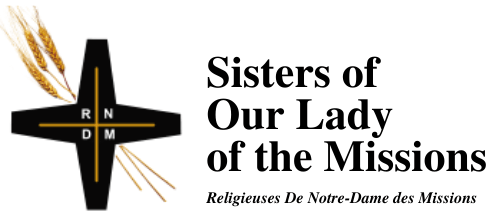Acts 1: 1-11; Psalm 47; Ephesians 4:1-13 (RM) or Eph 1:15-23 (RCL); Mark 16: 15-20 (RM) or Luke 24:44-53 (RCL.)
Life must have been so much simpler when the earth was still flat.
Having said that though (with a wink), I need to acknowledge the position of a colleague of mine, a medievalist who argued that, in the Middle Ages, seafaring peoples were aware that the earth’s surface had a certain round contour to it. This was because when a departing ship sails far enough away on the horizon, the hull disappears before the tip of the mast does.
Nonetheless, the conventional dualism of “heaven above, earth below” or “earth above, but below — ooh, you don’t want to go there!” still exerts a powerful influence on our religious imagery, even when it no longer reflects our limited scientific knowledge.
I discovered when helping my young cousin prepare her reading for the Easter Vigil (the first creation account from Genesis) that the expression “the dome of the sky above” makes no sense to a 12-year-old today. Our concept of space now is about unfathomable infinity, or innumerable galaxies, at least two trillion galaxies according to the data relayed by the now-obsolete Hubble Telescope. And, depending on how much science fiction you watch, populated by often gruesome aliens in costumes worn by Hollywood actors.
And yet, our religious cosmology has not changed. In church we still hear, pray and sing about “heaven above and earth below.” We translate it mentally from a statement of physical location to a state of spiritual existence, and not only in English: le ciel, der Himmel, in each case the sky becomes a synonym for Heaven.
A positive spin on this imagery might be that it de-centres our small selves and re-orients us to who we are as creations within infinite creation, called into being by a transcendent Divine love. The danger, unsurprisingly, has to do with cosmology in which physical placement represents hierarchical ranking, where higher is better than lower, and that if supreme power and ultimate domination characterize the wholly-Other, patriarchal God, then any claims to a divine right to power made by authoritarian rulers, sacred and secular, would be justified.
So what do we make of the story that Jesus rose upward from the earth’s surface and disappeared behind a cloud, never to visibly return? In our readings for today, the story is told more clearly in the beginning of the book of Acts. By contrast, in a section of text composed well after the rest of the gospel of Mark and added at the end, we find only a brief mention that he was “taken up into heaven.” Whatever the lived experience of those original disciples may have been, the text claims further,
“…and [he] took his seat at the right hand of God:”
In this case a theological belief, not an event that they witnessed.
In the Hebrew scriptures the prophet Elijah was believed to have ascended to the heavens in a chariot, and as a result, would someday return again. Before too long, Christians came to believe that Christ, like Elijah, had ascended in the direction of the East, and would return again from the East. A pattern of ascension combined with an anticipated return in an undefined future was already familiar to them.
So what sense can we make of the Ascension account today? The risen Christ was no longer physically present to those who had known him, but that did not mean he had somehow been “replaced” by the Holy Spirit.
Christ remains incarnate in our flesh. Christ represents a living, if not tangible, presence. We speak of “the living presence of Christ,” of seeing the face of Christ in the faces of other Christians who have died and risen with Christ in baptism, and that the sacraments are acts of Christ himself among his people.
There’s no question of “Christ then/Spirit now,” no either/or. The story of the Ascension acts as a capstone to the incarnation, death and resurrection of Christ, not to close off the narrative, but to propel it widely and wildly into the future and across the known world.
The ascension makes sense in the context of how the early church saw its mission. When Jesus disappeared, his disciples and friends were freed to go out to spread the news that death itself had been overcome by a prophet who was far more than a prophet. His ascension, in the words of commentator Jin Young Choi,
“generates a movement that is not centripetal but centrifugal.”
And it’s only the beginning.
© Susan K. Roll
This Reflection has been lightly edited from that of May 16, 2021.
Susan Roll retired from the Faculty of Theology at Saint Paul University, Ottawa, in 2018, where she served as Director of the Sophia Research Centre. Her research and publications are centred in the fields of liturgy, sacraments, and feminist theology. She holds a Ph.D. from the Catholic University of Leuven (Louvain), Belgium, and has been involved with international academic societies in liturgy and theology, as well as university chaplaincy, Indigenous ministry and church reform projects.





Thank you for your line: “Christ remains incarnate in our flesh”, which I have carried with me like a kind of mantra over these last days. It is a word of hope for me, in a world that presently holds so much violence and grief.